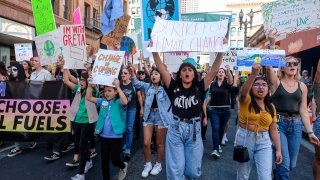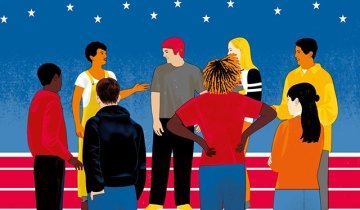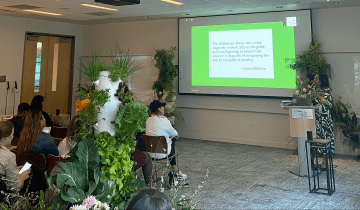Climate justice seeks to highlight the disproportionate effects of climate change on historically marginalized populations.
Many conversations around climate change understandably focus on melting ice caps and catastrophic weather. However, the impact on the most vulnerable populations worldwide is another important—and perhaps underrepresented—part of the climate crisis. Indeed, the United Nations classified it as a leading threat to human rights.
Educators who are interested in teaching climate change as a social justice issue may not be sure where to start. School curriculum for global warming varies by state, and the topic is typically reserved for science classes. For a list of resources related to climate justice, visit our Climate Change Resources for Educators. Additionally, here are some key points around which to organize a lesson.
Power and privilege play pivotal roles in climate change
Large corporations are a significant contributor of greenhouse gas emissions. In fact, major fossil fuel companies have contributed to 35% of all energy-related carbon dioxide and methane globally since 1965.
Hundreds of the world’s largest businesses have committed to using renewable energy and set targets on their emissions, but these solutions are insufficient to meet the perils of a warming planet. Plus, while many automakers set environmentally-friendly goals (e.g., producing a greater number of electric cars), they simultaneously lobby to block and delay legislation that cuts emissions.
Large corporations hold the most power over slowing and stopping climate change, but it is marginalized populations that suffer most, further exacerbating social inequities.
Communities of color are disproportionately affected
- All people experience the effects of climate change, but communities of color are hit the hardest.
- Black and Hispanic people are among those most susceptible to air pollution.
- Food insecurity, which affects people of color at disproportionate rates, is exacerbated by extreme weather.
- Some indigenous communities are losing their homes to rising seas and drought.
- Neighborhoods that were once redlined tend to have more pavement, fewer trees and higher temperatures, increasing the risk of heat illness.
Low-income communities lack resources to protect themselves
In addition to being disproportionately affected, low-income communities lack the resources to prepare or cope with the effects of climate change, especially when it comes to natural disasters. According to the US Department of Health and Human Services, “people of low socioeconomic status are more vulnerable in the face of disasters and are more likely to suffer more serious consequences during impact, from property damage to homelessness to physical and financial impacts.”
Additionally, prolonged drought and flooding can disrupt food supply or distribution, which may prevent people from accessing affordable, healthy food.
Climate justice is a global issue
Of course, the impact of climate change on vulnerable populations isn’t unique to the US. Poor countries that are susceptible to extreme weather and lack sufficient infrastructure are hit particularly hard.
The rise in world hunger is among the more alarming recent trends. The World Health Organization expects that climate change will cause approximately 250,000 additional deaths per year between 2030 and 2050 – from malnutrition, malaria, diarrhea and heat stress. Many nations facing chaotic weather patterns are also experiencing exacerbated conflict, displacement, and increasingly harsh inequalities tied to the climate crisis.
The climate justice movement is growing
Young people will face more dire consequences of climate change, and yet they are absent from top-level decisions to deal with it. Frustrated by what they see as inaction, young people are increasingly mobilizing to raise awareness and pressure leaders to act. Activist Greta Thunberg has emerged as the face of the movement, but students worldwide have become more engaged on the issue, notably staging a massive global protest in 2019.
Youth-led climate justice groups are driven by concern about their future, the growing threats to the planet, and the impacts on marginalized populations. And in the face of a global education system that fails to adequately address climate change, they feel they cannot wait to take action.




